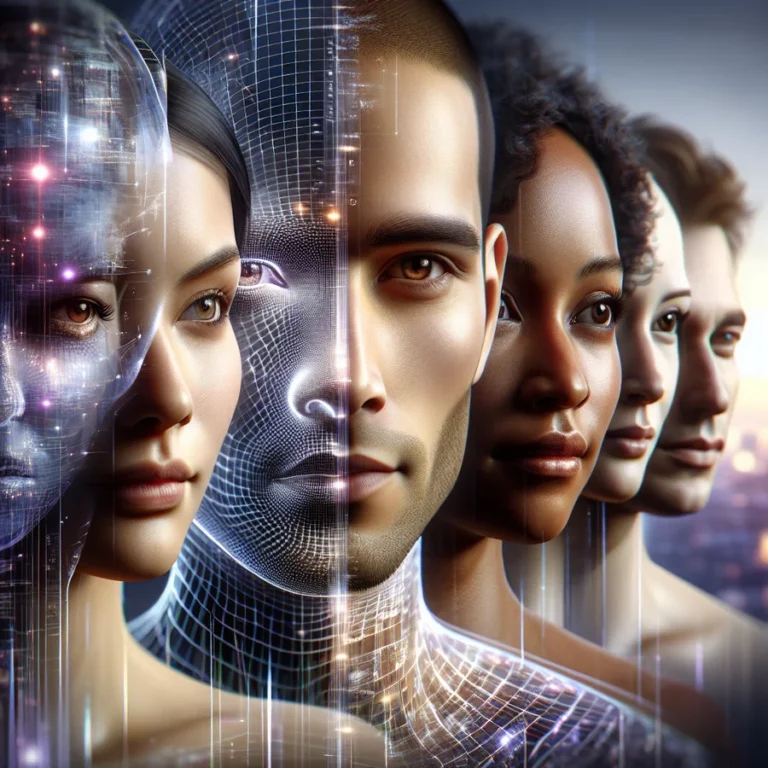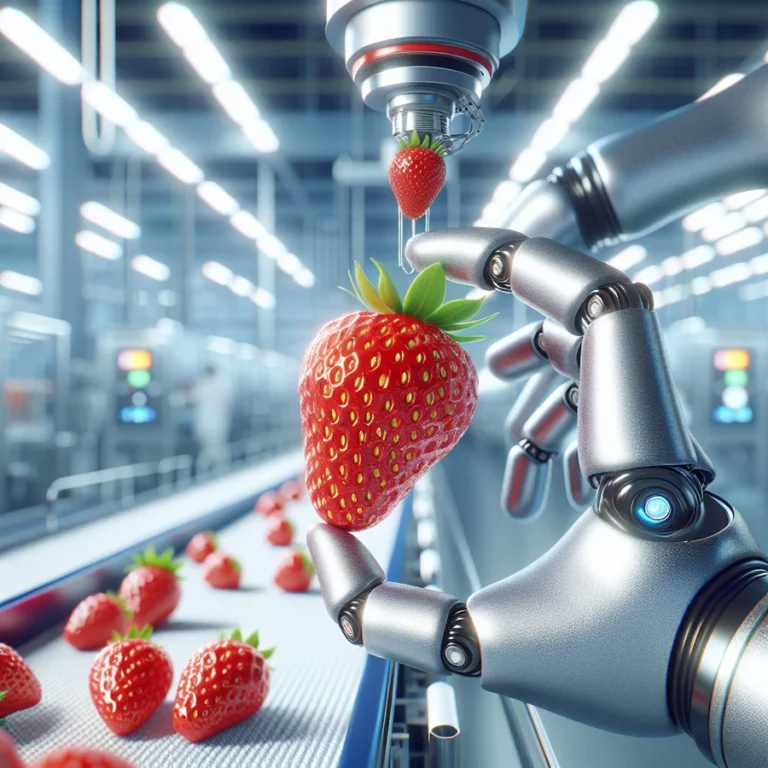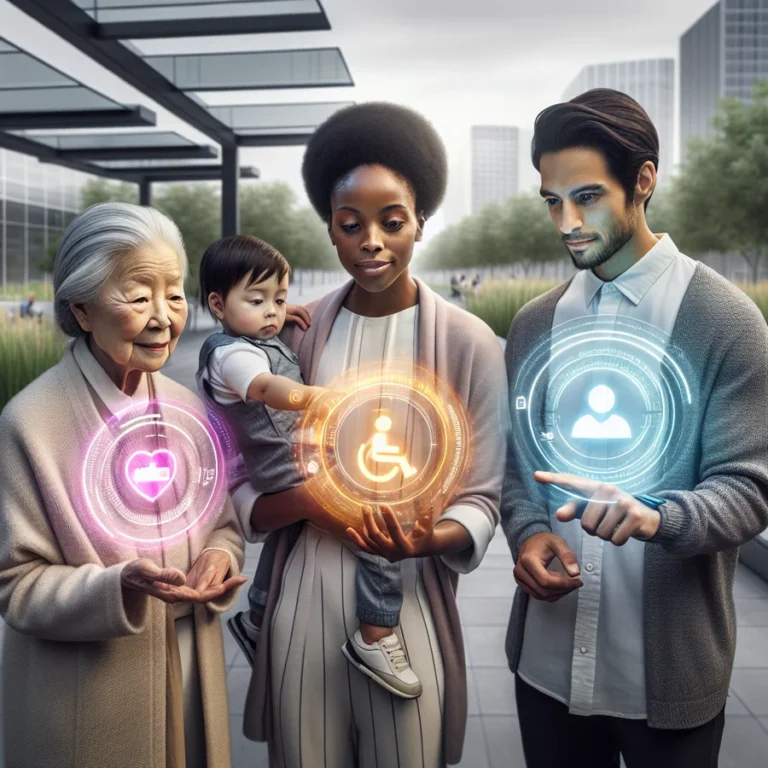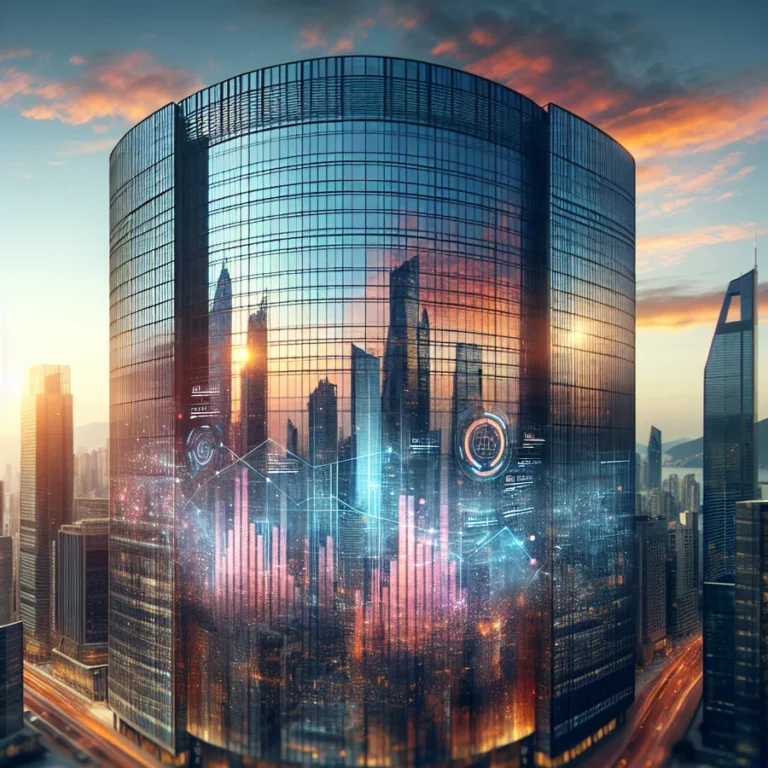AI in Smart Cities: Transforming Urban Living
Imagine a city that anticipates your needs, responds to emergencies instantly, and optimizes resources for a sustainable future. This isn’t science fiction. It’s the promise of AI in smart cities, and it’s rapidly becoming a reality. By integrating artificial intelligence with urban infrastructure, we can create more efficient, livable, and resilient communities.
This guide explores how AI in smart cities is revolutionizing urban living. We’ll delve into real-world applications, discuss the benefits and challenges, and forecast the exciting possibilities that lie ahead. Get ready to discover how AI is making our cities smarter, safer, and more sustainable.
Understanding the Core of AI in Smart Cities
Before diving into specific applications, let’s define what we mean by “smart cities” and “artificial intelligence.” This will provide a solid foundation for understanding how they work together.
What is a Smart City?
A smart city uses technology and data to improve the quality of life for its citizens. It’s about making urban areas more efficient, sustainable, and enjoyable to live in. Think of it as a city that’s constantly learning and adapting to the needs of its residents.
Smart cities leverage various technologies, including:
- Internet of Things (IoT): A network of physical devices, vehicles, and appliances embedded with sensors, software, and network connectivity.
- Data Analytics: The process of examining raw data to draw conclusions about information.
- Cloud Computing: Delivering computing services—including servers, storage, databases, networking, software, analytics, and intelligence—over the Internet (“the cloud”) to offer faster innovation, flexible resources, and economies of scale.
These technologies work together to collect data, analyze it, and use it to improve city services and infrastructure. The ultimate goal is to create a more responsive and efficient urban environment.
What is Artificial Intelligence (AI)?
Artificial intelligence (AI) is the ability of a computer or a machine to mimic human intelligence. This includes things like learning, problem-solving, and decision-making. AI algorithms analyze data, identify patterns, and make predictions, enabling computers to perform tasks that typically require human intelligence.
Reminder: AI isn’t about replacing humans. It’s about augmenting our abilities and automating tasks to free us up for more creative and strategic work.
Key components of AI include:
- Machine Learning (ML): A type of AI that allows computers to learn from data without being explicitly programmed.
- Deep Learning: A subset of machine learning that uses artificial neural networks with multiple layers to analyze data.
- Natural Language Processing (NLP): The ability of computers to understand and process human language.
AI is the brainpower behind smart city initiatives, enabling them to analyze vast amounts of data and make intelligent decisions.
Key Applications of AI in Transforming Urban Living
Now that we have a clear understanding of smart cities and AI, let’s explore some of the key applications of AI in smart cities that are transforming urban living.
Smarter Traffic Management with AI
Traffic congestion is a major problem in many cities, leading to wasted time, increased pollution, and economic losses. AI in smart cities offers innovative solutions to manage traffic flow more efficiently and reduce congestion.
Real-Time Traffic Monitoring
AI systems can analyze data from various sources, such as cameras, sensors, and GPS devices, to provide a comprehensive view of traffic conditions. This allows city officials to make informed decisions and take proactive measures to alleviate congestion.
For example, AI can:
- Integrate data from traffic cameras, road sensors, and GPS-enabled devices. This creates a holistic picture of current traffic conditions.
- Dynamically adjust traffic signal timings based on real-time traffic data. This optimizes the flow of vehicles through intersections.
- Provide real-time route guidance to drivers through navigation apps and digital road signs. This helps drivers avoid congested areas.
- Detect traffic incidents such as accidents or stalled vehicles. This allows authorities to respond promptly and restore normal traffic flow.
Example: Barcelona has implemented AI-driven traffic lights that adapt to real-time traffic conditions, resulting in a 30% reduction in traffic congestion.
Predictive Maintenance for Transportation Infrastructure
AI can also be used to predict when and where maintenance is needed on roads, bridges, and other transportation infrastructure. This allows city authorities to schedule repairs proactively, before issues escalate into major problems.
AI systems can:
- Analyze data from sensors embedded in roads and bridges. These sensors can detect early signs of wear and tear.
- Predict when and where maintenance is needed. This helps city authorities schedule repairs proactively.
- Optimize the allocation of maintenance resources. AI can prioritize maintenance tasks based on urgency and impact.
Example: Sydney is using AI to scan roads for early signs of deterioration, allowing crews to fix issues before drivers ever notice them.
Smart Parking Solutions
Finding parking in urban areas can be a significant source of frustration and traffic congestion. AI-powered smart parking solutions address this issue by providing real-time information on parking availability and guiding drivers to available spots.
AI systems can:
- Monitor parking spaces in real-time using sensors and cameras. This detects whether a spot is occupied or available.
- Direct drivers to available parking spots through mobile apps and digital signage. This reduces the time spent searching for parking.
- Implement dynamic pricing models for parking based on demand. This encourages turnover during peak times.
AI-Driven Public Services
AI in smart cities is also transforming public services, making them more efficient, accessible, and responsive to the needs of citizens. This includes everything from automated administrative services to smart grids.
Automated Administrative Services
AI can automate various administrative tasks, such as permit processing, document verification, and public inquiries. This reduces wait times and improves the overall citizen experience.
AI-powered systems can:
- Automate permit processing and document verification. This streamlines administrative tasks.
- Handle public inquiries through AI chatbots. This provides timely information on municipal services.
- Facilitate better communication between governments and citizens. This enhances transparency and citizen satisfaction.
Example: Singapore has embraced AI across various public services through its Smart Nation initiative, making it one of the most advanced smart cities globally.
Smart Grids for Efficient Energy Distribution
AI optimizes energy distribution through smart grids, ensuring efficient use of resources and reducing energy waste. This leads to cost savings for both the government and residents.
AI-enabled smart grids can:
- Analyze vast amounts of data from sensors throughout the energy grid. This predicts energy demand with high accuracy.
- Enable real-time load balancing by dynamically adjusting the flow of electricity. This ensures that essential services remain uninterrupted.
- Identify faults and potential failures in the energy grid. This allows for quick rerouting of power and alerting of maintenance teams.
- Efficiently integrate distributed energy resources such as solar panels and wind turbines. This ensures a stable supply by predicting and compensating for fluctuations in energy production.
Optimized Waste Management
AI can optimize waste collection routes and schedules, ensuring timely and efficient garbage disposal. This reduces operational costs and minimizes the environmental impact of waste collection vehicles.
AI-powered waste management systems can:
- Optimize waste collection routes and schedules. This ensures timely and efficient garbage disposal.
- Monitor bin status using sensors. This prevents overflow and ensures a cleaner urban environment.
- Identify and separate recyclables from waste more accurately. This increases recycling rates and promotes sustainability.
Example: San Francisco has implemented AI-powered waste management systems that have led to a 20% reduction in collection costs and a significant improvement in urban cleanliness.
Enhanced Public Safety with AI
Public safety is a paramount concern for any urban area, and AI in smart cities is increasingly being harnessed to enhance the safety and security of city environments.
Surveillance and Crime Prevention
AI-powered surveillance systems can monitor public spaces and detect unusual activities, enhancing public safety. These systems use facial recognition and behavioral analysis to identify potential threats and alert authorities in real-time.
AI-driven surveillance systems can:
- Process and analyze video feeds from thousands of surveillance cameras. This identifies patterns and detects anomalies.
- Identify individuals in real-time using facial recognition technology. This allows law enforcement to quickly locate suspects.
- Analyze human behavior in public spaces. This detects unusual activities that may indicate a potential crime.
Example: London has implemented an AI-driven surveillance system that monitors public spaces for suspicious activities, enhancing public safety.
Emergency Response
AI significantly enhances emergency response capabilities by analyzing data from various sources to predict and manage incidents more efficiently.
AI systems can:
- Analyze historical data and current conditions to predict where and when emergencies are likely to occur. This allows emergency services to allocate resources more effectively.
- Integrate data from emergency calls, social media, and sensors to provide a comprehensive view of ongoing incidents. This helps dispatchers prioritize calls based on severity and urgency.
- Streamline communication between emergency responders. This ensures that first responders have the information they need to address emergencies effectively.
Disaster Management
In the face of natural disasters, AI plays a crucial role in disaster management and recovery, providing tools and insights that help mitigate the impact and accelerate recovery efforts.
AI systems can:
- Analyze data from sensors, weather forecasts, and satellite imagery to predict natural disasters. This enables authorities to implement evacuation plans and other preventive measures.
- Assist in planning evacuation routes and managing the distribution of resources during a disaster. This ensures that shelters and emergency services are adequately supplied.
- Analyze satellite images and sensor data to assess the extent of damage post-disaster. This helps authorities prioritize recovery efforts.
AI in Urban Planning and Development
AI in smart cities is also revolutionizing urban planning and development. By analyzing demographic and economic data, AI can forecast urban growth and guide city planning decisions. This ensures that infrastructure development aligns with future needs and enhances the livability of urban areas.
AI tools can:
- Analyze demographic and economic data to forecast urban growth. This guides city planning decisions.
- Optimize land use by identifying the best locations for residential, commercial, and industrial development. This promotes balanced growth.
- Facilitate better community engagement in urban planning processes. This ensures that urban growth reflects the needs and preferences of the community.
Example: Songdo, South Korea, is a smart city built from the ground up with AI-driven urban planning, creating a highly efficient and sustainable urban environment.
Intelligent Street Lighting
AI-powered street lighting systems can enhance public safety and energy efficiency. These systems adjust brightness based on real-time conditions such as pedestrian activity and weather, ensuring optimal illumination while conserving energy.
AI-driven street lighting systems can:
- Control street lights based on real-time conditions. This ensures optimal illumination while conserving energy.
- Monitor the performance of street lighting infrastructure. This predicts failures before they occur and schedules maintenance proactively.
Example: Los Angeles has deployed AI-powered streetlights that adjust brightness based on the presence of pedestrians and vehicles, reducing energy consumption by 70%.
The Future of AI in Smart Cities
The integration of AI in smart cities is still in its early stages, but the potential for growth and innovation is immense. As AI technology continues to advance, we can expect even more sophisticated applications that will further enhance urban living.
Autonomous Transportation
AI-driven autonomous vehicles have the potential to revolutionize urban transportation by reducing traffic congestion, lowering emissions, and improving safety. Autonomous vehicles can communicate with each other and with city infrastructure to optimize routes, avoid collisions, and provide efficient transportation options for residents.
Healthcare Services
AI can transform healthcare delivery in smart cities by enabling remote monitoring, personalized treatment plans, and predictive analytics. AI-powered health monitoring systems can track vital signs and alert healthcare providers to potential issues, allowing for early intervention and better management of chronic conditions.
Citizen Engagement
AI can enhance citizen engagement by providing personalized services and facilitating communication between citizens and city officials. AI-powered platforms can provide citizens with real-time information about city services, allow them to report issues, and provide feedback on city initiatives.
Challenges and Considerations for AI in Smart Cities
While the potential benefits of AI in smart cities are significant, there are also several challenges and considerations that need to be addressed to ensure that AI is deployed responsibly and ethically.
Data Privacy and Security
Ensuring the privacy and security of citizen data is crucial as AI systems collect and analyze vast amounts of information. Cities must implement robust data protection measures to prevent breaches and misuse of data.
Bias and Fairness
AI algorithms must be carefully designed and trained to avoid biases that could lead to unfair treatment of certain groups. Continuous monitoring and evaluation are necessary to maintain fairness and accuracy in AI applications.
Infrastructure Regulations and Security
Traditionally, all of the different systems and departments in a city have been siloed and individually regulated. In order for AI in smart cities to work, systems will need to become increasingly interconnected and even more closely regulated to ensure the safe handling of personal data.
Interoperability and Standardization
Diverse IoT devices must communicate seamlessly. Many cities still face complications when attempting to unify hardware and software from multiple vendors. Universal standards are required to make connected devices work effectively together.
Equity and Access
IoT solutions must be inclusive, addressing the digital divide and guaranteeing access for all citizens, regardless of socioeconomic status. Stakeholders must implement policies that ensure all residents have reliable connectivity and affordable devices.
Cost and Funding
The high costs of implementing and maintaining IoT solutions demand sustainable funding strategies, such as public-private partnerships. Balancing investment, innovation, and public interest will be vital.
Conclusion
AI in smart cities is not just a futuristic concept; it’s a present-day reality that’s reshaping how we live, work, and interact with our urban environments. From optimizing traffic flow and enhancing public safety to promoting sustainability and improving public services, AI is making our cities smarter, more efficient, and more livable.
As we move forward, it’s crucial to address the challenges and considerations associated with AI deployment, ensuring that these technologies are used responsibly, ethically, and inclusively. By embracing AI thoughtfully and strategically, we can unlock the full potential of smart cities and create a brighter future for urban living.
Frequently Asked Questions (FAQs)
What is AI in smart cities?
AI in smart cities refers to the use of artificial intelligence technologies, such as machine learning, data analytics, and IoT, to optimize urban infrastructure, improve public services, and enhance the quality of life for residents.
How does AI improve traffic management in smart cities?
AI improves traffic management by analyzing real-time data from sensors and cameras to optimize traffic flow, reduce congestion, and adjust traffic signals dynamically.
Can AI help reduce crime in smart cities?
Yes, AI-powered surveillance systems, facial recognition, and predictive policing models help law enforcement agencies detect and prevent crimes more effectively.
How does AI contribute to sustainable urban development?
AI contributes to sustainability by optimizing energy consumption, improving waste management, and enhancing air quality monitoring in smart cities.
What role does AI play in public transportation?
AI optimizes public transportation by predicting demand, adjusting schedules, and improving service reliability, leading to a better commuting experience.
How does AI enable predictive maintenance in smart cities?
AI-powered predictive maintenance systems analyze sensor data to detect potential infrastructure issues before they become critical, reducing repair costs and improving safety.
What are some examples of AI-driven smart cities?
Cities like Singapore, Amsterdam, Barcelona, and Songdo have successfully implemented AI-driven solutions for traffic management, energy optimization, public safety, and urban planning.
How does AI impact urban planning?
AI-driven urban planning tools analyze data to design more efficient and sustainable cities, helping planners make informed decisions about infrastructure development.
What are the challenges of implementing AI in smart cities?
Challenges include data privacy concerns, high implementation costs, the need for robust AI governance, interoperability, equity, and ethical considerations.
What is the future of AI in smart cities?
The future of AI in smart cities includes advancements in autonomous vehicles, AI-driven healthcare, smart infrastructure, and enhanced citizen engagement, further enhancing urban living.






